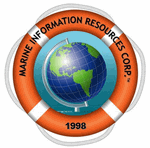Start Date
7-12-2017 11:00 AM
End Date
7-12-2017 11:45 AM
Description
Over the last decade, considerable effort has been spent on the evaluation of operational wave models such as the WAM, WAVEWATCH III, and SWAN thirdgeneration (3G) model. Most recent effort has focused on a “wholistic” approach to model evaluation, rather than on related comparisons directly to physics-based processes. In such an approach, model coefficients are tuned to maximize the global fit to integrated wave parameters such as wave height, mean/peak period, mean direction and directional spreading [1]. However, these coefficients do not ensure a universal “best-fit” to observation. Also, comparisons to spectra are omitted from the model evaluations since they tend to be generally poor [2]. Since overall spectral shape and its directional distribution are very important to modeling nearshore wave conditions, this can be critical to many coastal operations. In this paper, we will show a new approach to solutions which enables a fourth-generation (4G) model to run approximately an order of magnitude faster than thirdgeneration models and which provides improved estimates of swell arrival time and spectral shape for coastal areas
Extended Abstract for A New Generation of Spectral Wave Models
Included in
Session 2 Presentation - A New Generation of Spectral Wave Models
Over the last decade, considerable effort has been spent on the evaluation of operational wave models such as the WAM, WAVEWATCH III, and SWAN thirdgeneration (3G) model. Most recent effort has focused on a “wholistic” approach to model evaluation, rather than on related comparisons directly to physics-based processes. In such an approach, model coefficients are tuned to maximize the global fit to integrated wave parameters such as wave height, mean/peak period, mean direction and directional spreading [1]. However, these coefficients do not ensure a universal “best-fit” to observation. Also, comparisons to spectra are omitted from the model evaluations since they tend to be generally poor [2]. Since overall spectral shape and its directional distribution are very important to modeling nearshore wave conditions, this can be critical to many coastal operations. In this paper, we will show a new approach to solutions which enables a fourth-generation (4G) model to run approximately an order of magnitude faster than thirdgeneration models and which provides improved estimates of swell arrival time and spectral shape for coastal areas



